
|
April 6, 2019 - No. 12 Muted NATO Summit
on
• 70 Years
Later, the German Question Remains • United Actions in Washington, DC Stand Against War • Differences Within the U.S.-Led NATO Alliance
For Your Information • U.S. House
of Representatives Bill Supporting NATO Collusion and Contention Over the Arctic • Trudeau
Government Moves to Militarize the Arctic - Peter Ewart - • The Inuit and the Struggle for an Arctic Zone of Peace
For Your Information • Arctic
Council and the Military Issue
• Events
Related to Establishment of NATO Muted NATO Summit on 70th Anniversary of NATO's Founding 70 Years Later,
the
German Question Remains
|
|
|
Collusion and Contention Over the Arctic
Trudeau Government Moves to Militarize the Arctic
Since NATO was founded 70 years ago, successive Canadian governments have had a policy of not allowing NATO-led activity to take place in the Canadian Arctic. Despite this, Canadian governments have invited certain NATO countries to participate in Canadian-led military exercises such as Operation Nanook held annually or the controversial low-flying exercises over Labrador and northern Quebec back in the 1980s and 90s. And, of course, being under the U.S. dominated NORAD and NORTHCOM military structures, Canada has been involved in numerous joint activities of a bi-lateral nature with the U.S. in the Arctic. In addition, over the years, Canada has participated in collective NATO activities in Norway, the most recent being the massive "Trident Juncture 18" exercises last Fall to which Canada contributed 2,000 personnel.
Nonetheless, even though Canada has by far the most extensive polar territory of all 29 NATO countries, large-scale NATO exercises have never taken place in the Canadian Arctic.[1] Wikileaks provided a window into the rationale of previous Canadian governments by releasing a number of confidential U.S. cables in 2011. In one cable, U.S. officials related that Harper had told NATO Secretary-General Fogh Rasmussen that Canada opposed "a NATO role in the Arctic" and that Canada had "a good working relationship with Russia with respect to the Arctic, and a NATO presence could backfire by exacerbating tensions."[2]
Harper further stated that "some non-Arctic members favoured a NATO role in the Arctic because it would afford them influence in an area where 'they don't belong.'" In that regard, Harper was probably referring to "non-Arctic" European Union (EU) countries like Germany, France and the UK which have expressed great interest in eventually utilizing Canada's Northwest Passage as well as gaining access to the abundant natural resources that will open up in the Arctic as global temperatures rise and ice recedes.
The Northwest Passage winds through Canada's northern archipelago. However, the EU countries do not recognize Canada's claim that the sea lane lies within Canada's internal waters. Having U.S.-led NATO activities in the Canadian Arctic would fortify the EU's position that the Northwest Passage is situated in international waters. As a result, Canada's claim to the waters could become null and void.
For its part, the U.S. also does not recognize Canada's claim over the Passage. NATO activity in the Canadian Arctic could strengthen its case also. But there is also a downside for the U.S. Currently, the U.S. militarily has Canada under its thumb through NORAD and NORTHCOM. Inviting other European countries into the North American Arctic through U.S.-led NATO operations, especially competitors such as Germany, Britain and France, could be counter-productive in the long run for U.S. interests as well.
Indeed, the current bi-lateral arrangement between the U.S. and Canada is very much to the American advantage, and fits in well with the Trump administration's preference for establishing bi-lateral rather than multi-lateral deals with other countries. It also fits in with the aim of consolidating a "fortress North America" of monopolies and oligopolies.
However, while it is clear
that Canadian governments of
the
past, both Liberal and Conservative, have opposed or discouraged
NATO involvement in the Canadian Arctic, the Trudeau government
appears to be throwing this longstanding position overboard.
For example, in 2017, the government put forward what it termed a new National Defence policy under the title "Strong, Secure, Engaged." This policy states that "Acknowledging rising international interest in the Arctic, Canada must enhance its ability to operate in the North and work closely with allies and partners." It further proposes a "new initiative" to "conduct joint exercises with Arctic allies and partners and support the strengthening of situational awareness and information sharing in the Arctic, including with NATO."[3]
Following up on the policy, the House of Commons Committee on National Defence, which was chaired by Liberal MP Stephen Fuhr, issued a report in June 2018 titled "Canada and NATO: An alliance forged in strength and reliability."[4] The tone of the report and many of the witness submissions suggests a much closer involvement with NATO in the Arctic is on the agenda.
In its final recommendations, the House of Commons Committee states "that the government of Canada take a leading role within NATO to specialize in Arctic defence and security doctrine and capabilities, and enhance NATO's situational awareness in the Arctic, including joint training and military exercises for NATO members in the Canadian Arctic."
As the language suggests, the new policy could lead to increased NATO and even U.S.-led NATO military activity in Canada's Arctic. If so, the Trudeau government risks losing Canadian sovereignty over the Northwest Passage, alienating Indigenous and non-Indigenous peoples who are opposed to militarization of the region, as well as further ramping up tensions with Russia which sees itself being encircled by NATO on various fronts.
Notes
1. "List of NATO exercises," Wikipedia, accessed March 18, 2019.
2. "Canada PM and NATO S-G discuss Afghanistan, the Strategic Concept, and the Arctic." Wikileaks, January 20, 2010.
3. "Strong, Secure, Engaged: Canada's Defence Policy," Department of National Defence, 2017.
4. "Canada and NATO: An alliance forged in strength and reliability." Report of the Standing Committee on National Defence. House of Commons. Canada. June 2018.
Northwest Passage Dispute
The Northwest Passage, the shipping route which winds through the many islands of the Canadian Arctic archipelago, has long been claimed by Canada to be internal waters under its jurisdiction. However, this position is disputed by the U.S. (and various European countries) who argue that the Passage is an international strait joining "one area of high seas to another," i.e. Davis Strait in the east and the Beaufort Sea in the west.[1] Thus, from the U.S administration's perspective, it does not fall under Canada's legal jurisdiction, and does not require Canadian government permission to sail through. As Arctic ice melts and clears the way for more trans-oceanic shipping, both commercial and military, this issue is expected to heat up.
The Canadian stand on the Northwest Passage was articulated in 1985 in the House of Commons by then Secretary of State for External Affairs Joe Clark who said: "Canada's sovereignty in the Arctic is indivisible. It embraces land, sea and ice. It extends without interruption to the seaward-facing coasts of the Arctic islands. These islands are joined, and not divided, by the waters between them. They are bridged for most of the year by ice. From time immemorial Canada's Inuit people have used and occupied the ice as they have used and occupied the land. The policy of the Government is to maintain the natural unity of the Canadian Arctic archipelago and to preserve Canada's sovereignty over land, sea and ice undiminished and undivided."[2]
Clark's speech came about in the wake of the U.S. Coast Guard vessel Polar Sea sailing through the Northwest Passage in 1985 without formal authorization by the Canadian government. This act of defiance by the U.S. government enraged many in Canada who saw it as a violation of Canadian sovereignty. There were protests across the country, including an incident in which Canadian students and Inuit activists dropped a Canadian flag and leaflets from an aircraft onto the deck of the Polar Sea and called for the crew to exit the Northwest Passage and return to international waters.[3] For its part, the Soviet Union supported Canada's claim of jurisdiction over the Passage just as it claimed sovereignty over the Northeast Passage which follows along its coast on the other side of the polar ice cap (a stand which Russia maintains to this day).
A similar controversy happened back in 1969 when the
U.S.
tanker SS Manhattan transited
the Northwest Passage from east to
west without asking permission of the Canadian government. Once
again, this action was met with protests. For example, in the
course of the voyage along the ice-clogged sea lane, "Inuit
hunters stopped the vessel and demanded that the vessel master
ask permission to cross through Canadian territory, which he did,
and they granted."[4]

When the SS Manhattan, the
first oil tanker ever to cross the Northwest
Passage, came through Pond Inlet in 1969, Joseph Komangapik went out in
front of it and began to build an igloo. Done as a symbolic gesture, it
ran in a number of mainstream newspapers across Canada.
Even during the tense times of the Cold War and nuclear brinkmanship, the U.S. has considered its unfettered right of passage to be paramount, not just in the Arctic but globally. Indeed, these global naval interests "prevent the U.S. government from conceding to Canada on the [Northwest] passage." As one commentator puts it, the U.S. "will continue to project power from straits and channels and protect vital trade routes around the world."[5]
In 1987, more than a year after the Polar Sea incident, Prime Minister Brian Mulroney met with then U.S. President Ronald Reagan and discussed the Northwest Passage issue. In essence, rather than taking the issue further legally or diplomatically they agreed to disagree. The two countries decided "that the U.S. would always ask permission before sending icebreakers through the Northwest Passage. And the Canadians would always give it."[6]
At that time, according to some analysts, "the Americans did not want to set the precedent that accepting full Canadian sovereignty over the Northwest Passage would mean elsewhere in places such as the strait of Hormuz [between the Persian Gulf and the Gulf of Oman]." But there was another complicating factor. The Americans did not want to win a court challenge against Canada in an international court "because to do so would mean that countries such as Russia would then have the clear international right to transit the [Northwest Passage]" close to the North American continent.[7]
The issue subsided for some years. However, in the dying days of his administration in 2009, President George W. Bush issued "National Security Presidential Directive -- 66." This directive states that "The United States has broad and fundamental national security interests in the Arctic region and is prepared to operate either independently or in conjunction with other states to safeguard these interests ... "[8]
The directive challenges both Canada and Russia. It states: "Freedom of the seas is a top national priority. The Northwest Passage [claimed by Canada] is a strait used for international navigation, and the Northern Sea Route [claimed by Russia] includes straits used for international navigation; the regime of transit passage applies to passage through those straits. Preserving the rights and duties relating to navigation and overflight in the Arctic region supports our ability to exercise these rights through the world, including through strategic straits."
When the Harper government put in place a mandatory shipping reporting system, the American administration issued a diplomatic protest on March 19, 2010 in which it restated its position that 'the Northwest Passage constitutes a strait used for international shipping' and that Canada does not have "the right to unilaterally impose such a requirement."[9]
Since the Trump administration came into office, according to some observers, there are signs that the U.S. may be about to ramp up its challenge to Canada over the Northwest Passage. This is consistent with its scorn towards international laws and agreements, as well as bellicose attitude towards friend and foe alike, unintended consequences to be steamrolled over.
Most recently, the U.S. Secretary of the Navy Richard Spencer stated that "the United States will have to be more engaged in the region" by conducting freedom-of-navigation operations "in the northwest -- in the northern passage"[10]. It is not clear whether "northern passage" refers to Canada's Northwest Passage or Russia's Northeast Passage or both. Whichever operation is undertaken would be highly provocative and, in the case of Russia, dangerous militarily.
Notes
1. Charron, Andrea. "The Northwest Passage in context," Canadian Military Journal, Winter 2005-2006.
2. Killas, Mark. "The legality of Canada's claims to the waters of its Arctic archipelago," Ontario Law Review, Vol. 19:1.
3. "1985 Polar Sea controversy," Wikipedia, accessed March 26, 2019.
4. "SS Manhattan (1962)," Wikipedia, accessed March 26, 2019.
6. Beeler, Carolyn. "Who controls the Northwest Passage? It's up for debate," PRI's The World. September 4, 2017.
7. Huebert, Rob. "Protecting Canadian Arctic Sovereignty from Donald Trump," Canadian Global Affairs Institute, November 2018.
8. "National Security Presidential directive -- 66," White House, Office of the Press Secretary, January 9, 2009.
10. Lajeunesse, Adam. "Is the next big fight over the Northwest Passage coming?" Policy Options, February 14, 2019.
The Inuit and the
Struggle for an
Arctic Zone of Peace

Canadian delegation at the 2018 general assembly of the Inuit
Circumpolar Conference,
held in Utqiagvik, Alaska.
Indigenous peoples of the Arctic, along with non-Indigenous residents, have a long and proud history of striving for a peaceful Arctic region. This includes the massive opposition to U.S. atomic bomb testing on Amchitka Island off Alaska in the 1960s and early 70s, the campaigns for peace in Nordic countries, and the long struggle of the Innu and Inuit peoples against the low-level and supersonic military flights that the Canadian government and various NATO countries conducted across Labrador and northern Quebec in the 1980s and 90s.
 In 1989, in a powerful
statement that still resonates today,
Mary Simon, then President of the Inuit Circumpolar Conference
(ICC), wrote eloquently about the need to establish an Arctic
Zone of Peace. She points outs in her article that a vital
starting point is to "recognize that vast regions in northern
Canada, Alaska, Greenland and eastern Siberia constitute first
and foremost the Inuit homeland" and that Inuit people do not
want their traditional territories treated as "a strategic
military and combat zone between eastern and Western
alliances."[1]
In 1989, in a powerful
statement that still resonates today,
Mary Simon, then President of the Inuit Circumpolar Conference
(ICC), wrote eloquently about the need to establish an Arctic
Zone of Peace. She points outs in her article that a vital
starting point is to "recognize that vast regions in northern
Canada, Alaska, Greenland and eastern Siberia constitute first
and foremost the Inuit homeland" and that Inuit people do not
want their traditional territories treated as "a strategic
military and combat zone between eastern and Western
alliances."[1]
She notes that the Inuit people, who have lived in the circumpolar regions for thousands of years, are the Arctic's legitimate spokespersons. Because their lands and communities "transcend the boundaries of four countries" (i.e. U.S., Canada, Greenland and Russia), the Inuit are in "a unique position to promote peace, security and arms control objectives among Arctic states."
"Any excessive military build-up in the North," she states, "whether by the Soviet Union [which was still in existence then] or the United States, only serves to divide the Arctic, perpetuate East-West tensions and the arms race, and put our people on opposing sides."
From an Inuit viewpoint, an Arctic zone of peace would
not
allow nuclear weapons or testing of weapons of mass destruction,
nor military activities that "disrupt or undermine the
communities, territories, rights and security of aboriginal and
other northern peoples." In that regard, safeguarding the Arctic
environment "must take precedence over military exercises and
activities."
As a first step, the ICC proposes that Arctic nations must declare that an Arctic zone of peace should be a central objective for them, possibly brought about in stages. Furthermore, that, from these countries, "there must be an express commitment that their future military and arms control policies will be consistent with the objective of a zone for peace" and that Canadian and Nordic state territory "must not be used by any country for offensive and destabilizing military purposes."
|
|
In addition, nuclear weapons and all air- and sea-launched cruise missiles must be banned and the naval uses of the Arctic reviewed, keeping in mind that "the principle of unrestricted 'freedom of navigation' on the high seas is out-dated and open to abuse by military powers."
An important step in reversing the trend of militarization would be to develop an "international legal framework that codifies offences against the peace and security of humankind" and that these standards would include such human rights "as the right to peace, the right to development and right to a safe and healthy environment."
In closing, she urged "all Arctic governments, regardless of their military affiliation or nuclear status, to embrace the idea of an Arctic zone of peace" and that for those whose ancestral home has always been the Arctic the future of the North merits no less!"
Note
1. Simon, Mary. "Toward and Arctic Zone of Peace: An Inuit Perspective." Peace Research, Vol. 21, No. 4 (November 1989). Canadian Mennonite University.
For Your Information
The Arctic -- An Overview
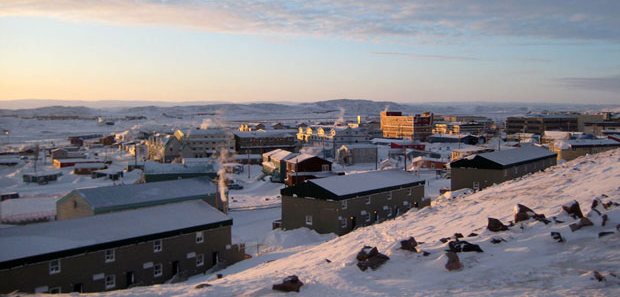
Iqaluit, Nunavut.
The Arctic is one of the treasures of the planet earth, a region of great beauty, pristine wilderness, and often unforgiving climate. If the dividing line for its Southern boundary is set at the 60th parallel (which would include the Arctic and parts of the sub-Arctic), it encompasses millions of kilometres of ice, snow, tundra, glacier, ocean, mountain, forest, muskeg, polar desert, and perma-frost. About 40 per cent of Canada's territory lies within the Arctic region as does much of the other Arctic countries. Despite the harsh climate, there is a wide range of animal life, including caribou, reindeer, walrus, whales, polar bears, wolves, great flocks of birds, and other species.
Despite the impression of it as an ancient, primordial region, the current Arctic environment is the world's youngest in geological time. Seventy million years ago the region was virtually ice-free and was blanketed with ferns, cypress trees, and other flora, and populated with animals associated with sub-tropical climates.
The population of the Arctic today is about four million people of which approximately 10 per cent are Indigenous (numbers can vary widely depending upon where Arctic boundaries are drawn). In Canada, however, Indigenous people represent about half the Arctic population, and in Greenland, the majority. These Indigenous and non-Indigenous people live in eight different countries, including the U.S. (Alaska), Canada (Yukon, Northwest Territories, Nunavut, Northern Quebec and Labrador), Greenland and Faroe Islands (Denmark), Iceland, Norway, Sweden, Finland and Russia. Over half of the 4 million live in Russia which has the largest city north of the Arctic Circle (Murmansk).
Indigenous peoples are believed to have inhabited Siberia in Russia as far back as 30,000 to 40,000 years ago. In Canada, estimates for penetration of the Arctic Circle region range between 12,000 to 14,000 BCE, with the settlements of Inuit peoples estimated to be 2500 BCE or as early as 6500 BCE. Through ingenuity, hard work and intelligence, these peoples were able to build and sustain their nations and rich cultures in the harsh conditions of the Arctic, often with very limited materials.
A partial list of Indigenous Arctic groupings today includes Inuit (Canada, Alaska, Greenland, Russia), Gwich'in (Yukon, Northwest Territories, Alaska), Athabaskan (Canada, Alaska), Sami (Norway, Sweden, Finland, Russia), Aleutian (Alaska, Russia), Innu (Canada) and Cree (Canada). Russia alone has over 40 Indigenous peoples. In all these regions, Indigenous populations were decimated by colonial exploitation, cultural aggression, introduced diseases, and other scourges. But in the face of it all, through their determined efforts, they have defended their rights, land and livelihoods, as well as opposed militarization of the region.
There are wide divergences across the vast region of the Arctic in terms of population, governance, cultures, languages, and climate, as well as extent of urbanization, industrialization and militarization. For example, northern Canada and Greenland are sparsely populated, while Alaska and Russia are significantly larger. The lowest temperature ever recorded on earth (minus 90 degrees Fahrenheit) was in Siberia. Yet the climate in Reykjavik, Iceland, influenced by ocean currents, is relatively moderate with the temperature varying only a few degrees either above or below zero year round. Despite the differences and distances, the peoples of the Arctic have links that go back many years and see themselves as having not only common territory but often common cause with each other.
The Arctic region is rich in natural resources including an estimated 22 per cent of the world's oil and gas reserves; deposits of uranium, bauxite, iron ore, copper, nickel, cobalt, phosphates and numerous other metals and minerals; fresh water (10 per cent of the world's fresh water is tied up in the Greenland ice sheet); hydro power; and extensive fish and sea animal stock. Industries include mining, oil and gas drilling, hunting and gathering, fishing, trapping, animal husbandry (reindeer), tourism and Indigenous art and sculpture.
Despite its pristine nature, the Arctic is experiencing dramatic effects from pollution and global warming. Industrial development, along with increased military activities, are increasing pollution in the land and waters. In addition, airborne pollutants from other regions of the earth are accumulating.
As temperatures rise (much faster than almost anywhere else on earth), the melting of sea ice and glaciers is having a huge impact on the land, wildlife and peoples of the region, as well as sea levels worldwide. Along with other issues, the problem is compounded by the permafrost thawing and releasing huge amounts of methane, a greenhouse gas.
In coming years, it is expected that Canada's Northwest Passage and Russia's Northeast Passage will become less ice-bound and more navigable, opening up these routes for trans-oceanic shipping, as well as oil and gas drilling and fishing. As a result, competition between the big powers and corporate cartels is ramping up for access and control through both commercial and military means.
It is true that new and challenging problems are emerging. But is also true that the peoples of the Arctic, both Indigenous and non-Indigenous, including those in Canada, are resilient and will continue fighting to defend their rights, lands and way of life.
In the following songs (translated from Inuktitut 100 years ago), the wonderful Inuit oral poet and singer Uvavnuk captured so well the resilient spirit and outlook of her people amidst the awe-inspiring forces of nature:
The Great Sea
The great sea
Has sent me adrift.
It moves me
As the weed in a great river
Earth and the great weather
Move me
Have carried me away
And move my inward parts
with joy.
The one great thing
And I think over again
My small adventures
When from
a shore wind I drifted out
In my kayak
And I thought I
was in danger.
My fears,
Those small ones
That I
thought so big,
For all the vital things
I had to get and
to reach.
And yet, there is only
One great thing,
The
only thing.
To live and see in huts and on journeys
The great day
that dawns,
And the light that fills the world.
Arctic Council and the Military Issue
The Arctic Council, formed in 1996, is the leading multi-lateral body in the Arctic region.[1] Its eight voting-member states are Canada, U.S., Denmark (Greenland), Iceland, Norway, Sweden and Finland, all of which have territory within the Arctic Circle. As well, there are six "Indigenous Participant" organizations, including the Inuit Circumpolar Council, Aleut International Association, Arctic Athabaskan Council, Gwich'in Council International, Russian Association of Indigenous peoples of the North and the Saami Council. In addition, thirteen Asian and European states, including Germany, U.K., Japan, and China, have "Observer" status.
In its work, the Council is defined as the leading inter-governmental forum in the Arctic that:
a) provides a means for promoting cooperation,
coordination
and interaction among the Arctic states, with the involvement of
the Arctic Indigenous communities and other Arctic inhabitants on
common Arctic issues, in particular sustainable development and
environmental protection in the Arctic.
b) oversees and
coordinate the programs established under the Arctic
Environmental Assessment Strategy.
The Council came into being following the suggestion of Canadian Prime Minister Brian Mulroney in a speech he made in Leningrad on November 24, 1989. In his speech, Mulroney posed the question: "And why not a council of Arctic countries eventually coming into existence to co-ordinate and promote co-operation among them?"[2]
This echoed the statement of Prime Minister Louis St. Laurent and secretary of state Lester B. Pearson back in 1946 that Canada "wished to work 'not only with the USA but with the other Arctic countries, Denmark, Norway and the Soviet Union,' in fostering cooperative measures for the economic and communications development of the Arctic'." According to some analysts, this statement was prompted by longstanding "Canadian fear of American pressure."[3]
In 1987 in Murmansk, two years before Mulroney's statement, Soviet president Mikhail Gorbachev, made a foreign policy speech calling for the Arctic to become a "zone of peace."[4] In his comments, he called for the following six measures:
1. Establishment of a nuclear-free zone in Northern
Europe.
2. Consultations between the Warsaw Pact and NATO
aimed at restricting and scaling down naval and airforce
activities in the waters of Northern Europe and Greenland.
3.
Cooperation on resource development and technical exchange.
4. Coordination and exchange of research between northern and
sub-arctic countries on scientific issues with special attention
on Indigenous populations and ethnic groups.
5. Cooperation
between northern countries on environmental protection and
management.
6. Opening up of the Northern sea route to
foreign ships, with Russia providing the ice-breakers.
Gorbachev's speech is seen by many as laying the foundation for the Arctic Council and other cooperative initiatives that followed amongst the Arctic countries and peoples, including the Finland-led Arctic Environmental Protection Strategy (which was later to be transformed into the Arctic Council).
Following up on Prime Minister Mulroney's suggestion, a panel of Canadian northerners and northern experts began what was called "The Arctic Council Project," which received financial support from the Walter and Duncan Gordon Charitable Foundation. Walter Gordon was a federal Liberal cabinet minister known for his economic nationalist policies.
Another factor in the development of the Project was "the growing voice of the indigenous peoples of the Canadian North" which was reflected in the composition of the panel. Members included co-chairs Franklyn Griffiths, a professor of political science and Rosemarie Kuptana, former president of the Inuit Broadcasting Corporation, as well as individuals from various northern Indigenous organizations including the Inuit Tapirisat of Canada, Dene Nation, Indigenous Survival International and Inuit Circumpolar Conference. Other members were from the Canadian Arctic Resources Committee and the Canadian Centre for Arms Control and Disarmament.
After consulting with northerners across the Arctic, the panel released a "Framework Report" in 1990 to establish an international Arctic Council.[5] In the report, the panel noted that "Canada's fate and the fate of the Arctic are inseparable" and that Canada, as a northern people and northern land, was in a unique position to take the lead in establishing the Council. It stated that "as the alignments and priorities of the Cold War give way to a new architecture of regional and global co-operation, the ice states are presented with a truly extraordinary opportunity for institution-building in the Arctic."
The panel's vision of the Arctic was not as a frontier "but as part of the common home of the circumpolar nations." This vision acknowledged "that the outstanding resource of the Arctic is its people, not its oil and gas, hard minerals or space for military action." Furthermore, the panel believed that the new Council would break with the past "in giving new voice to northerners" and new opportunities for collaboration and cooperation.
The report argued that "to view the Arctic primarily in terms of sovereignty and its defence against foreign intrusion is to be woefully behind the time," especially in light of "countless silent border crossings [that] occur daily in a region whose environment forms a whole." It further stated that the Arctic is a distinct domain, that new inter-state cooperation is required, and that to conceive of the Council's Arctic purpose "essentially in terms of what might be accomplished behind lines of national jurisdiction is no longer adequate."
Speaking of Canada's support for civil collaboration, the report stated that Canada had pursued "bilateral Arctic measures with the Soviet Union since the 1970s" and favoured "multilateral arrangements that in some instances have had more in common with the thinking of the Soviet Union than the United States." However, it also pointed out that "for the time being, though, Canada adheres to the NATO view that the Arctic military matters are to be negotiated exclusively on an East-West rather than a circumpolar basis."
The report noted that the increased militarization of the Arctic up to then, i.e. 1990, was not likely to be checked by current arms control means and that the region was "subject to continued militarization even as demilitarization becomes the rule in Europe and in American-Soviet relations." This amounted to being treated in a "prejudicial fashion by national security decision-makers."
In the opinion of panel members, the eight member states of the proposed Arctic Council would have "an obligation to discuss the military problems of the Arctic, and to carry any common understandings forward into the relevant extra-regional negotiations," and that "the stronger the force of Arctic military competition and the opposed-forces thinking that accompanies it, the more difficult the civil collaboration that is essential to sound management of an interdependent region." The conclusion was that the Arctic "cannot remain a home to military competition increasingly viewed as intolerable elsewhere" and that there was a need for an international instrument like the Arctic Council which "permits all concerned to generate and act upon a common vision of the region's future."
Regarding the inevitable criticism from some quarters about including military affairs in the Council's agenda, the report claimed that there was no "iron curtain" between civil and military matters and "that only a general-purpose Arctic institution is equal to the shared responsibilities of the Arctic states and to the opportunity to make a new beginning at a time of fundamental transition in international affairs." Furthermore, that "to constrain [the Arctic Council] to a non-military agenda would in effect be to affirm that a southern user's mentality enjoys undiminished official support among the Arctic Eight."
At first, "neither the Americans or Soviets accepted the initial effort to create this council."[6] As time went on, the Panel saw its recommendations being watered down or eliminated. Various states were "unanimous in tacit opposition to negotiations among arctic states on military matters" and that these matters "were more appropriately addressed in fora like NATO or the Helsinki Process (CSCE)." On the other hand, Indigenous peoples and territorial governments were more likely to want these issues on the agenda.[7]
Besides the problem of military issues, the U.S. was also opposed "to the Canadian focus on Indigenous issues" over that of the environment, as well as being concerned about Canada's insistence on "sovereignty over ice-covered waters where Canadian Inuit were hunting and where the U.S. wished to establish shipping routes."
The Americans eventually joined the Council, but reluctantly. The price paid for persuading the Americans to join was "their determination to keep the Council as weak as possible." As a result, Canadian officials were unable to give the Arctic Council the powers they believed it needed to serve as an effective forum for the circumpolar world."[8]
Since 1996, the Arctic Council has convened on a regular basis and has undertaken a number of environmental, ecological and social initiatives. In addition, although the Council itself does not have enforcement powers, it has provided a forum for the negotiation of "important legally binding agreements among the eight Arctic States" such as regarding search and rescue in the Arctic, marine oil pollution preparedness and response, and Arctic science cooperation.
However, the mandate of the Council continues to explicitly exclude issues of "military security" or militarization regarding the Arctic. But in recent years there has been some questioning of this longstanding position. The irony is that the concern is now coming from U.S. sources. For example, in 2016, during the Obama administration, the Washington, D.C. security and defence think tank "Center for Strategic and International Studies (CSIS)" called for a redesigned Arctic Council to include a "security dimension." And there are other U.S. voices also wanting to expand the Council's mandate. The rationale for this expansion appears to come from what is perceived by some to be a developing Russian military threat in the region and elsewhere.[9]
Still others see the inclusion of military issues on the Council's agenda as a "politicization" of the organization and "risks damaging the current cooperation and coordination between Arctic states and indigenous communities." In that regard, the boycott of an Arctic Council meeting in Russia in 2014 by Canada and the U.S. over the Ukraine/Crimea crisis is viewed by some as an example of this politicization. Such politicization could "paralyze" the organization, they argue. Instead, the existing Council governance structure is said "to function very well, largely unaffected by major security crises."[10]
However, in 2019, given the Trump administration's concern about participating in multilateral structures, it remains to be seen what its position will be regarding any proposed expansion of the Arctic Council's mandate to include military issues or, for that matter, what form its participation in the Council may take in the future.
Notes
1. "The Arctic
Council."
2. "To establish an international Arctic Council: A framework report." Interim Report of the Arctic Council Panel. Canadian Arctic Resources Committee. November 1990.
3. Keskitalo, Eva. "Negotiating the Arctic: The construction of an international regime." New York: Rutledge, 2004.
4. Gorbachev, Mikhail.
"Speech
in Murmansk at the ceremonial meeting on the occasion of
the presentation of the order of Lenin and the gold star to the
city of Murmansk." Oct. 1987.
5. "To establish an international Arctic Council: A framework report." Interim Report of the Arctic Council Panel. Canadian Arctic Resources Committee. November 1990.
6. Huebert, Rob. "Canadian Arctic sovereignty and security in a transforming circumpolar world." Canada and the changing Arctic: Sovereignty, security and stewardship. Wilfred Laurier University Press. 2011.
7. Scrivener (1996) in Keskitalo, Eva. "Negotiating the Arctic: The construction of an international regime." New York: Rutledge, 2004.
8. Huebert, Rob. "Canadian Arctic sovereignty and security in a transforming circumpolar world." Canada and the changing Arctic: Sovereignty, security and stewardship. Wilfred Laurier University Press. 2011.
9. Groenning, Ragnhild. "Why
military
security
should
be
kept
out
of
the
Arctic
Council." The
Arctic Institute. June 2, 2016.
10. Stephen, Kathrin. "An
Arctic
security
forum?
Please,
no!" The Arctic Institute. May 26,
2016.
(To access articles individually click on the black headline.)
Website: www.cpcml.ca Email: editor@cpcml.ca


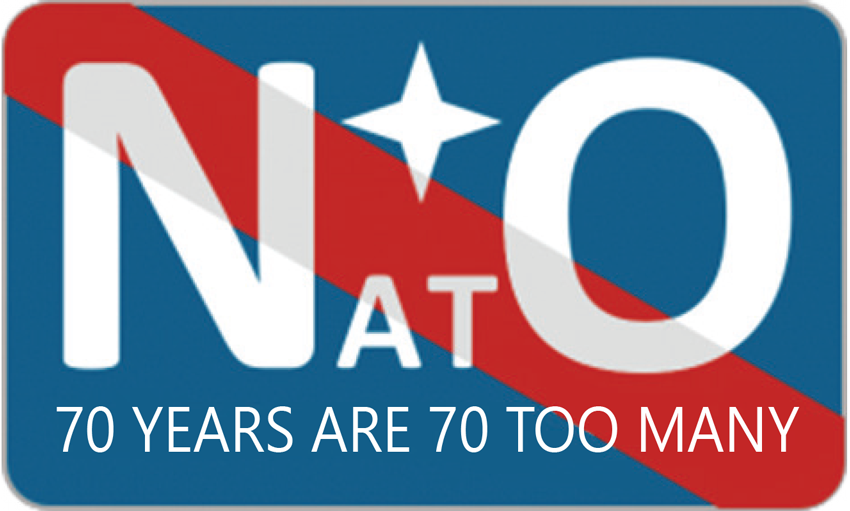 When NATO was founded in
1949, it was a period of upsurge among the peoples, who had defeated
fascism. They were demanding the denazification of Germany, the
dismantling of its war industry and restoration of democratic liberties
as well as fighting for and forming people's democracies. NATO was
formed in part to block this democratic surge and to restore Nazis to
positions of power, with the U.S. playing the main role. While the
peoples were striving to consolidate their victories over fascism and
eliminate any remnants of the Nazis and Nazi power from their midst,
the U.S. was acting to do the opposite. This included the division and
occupation of Germany and formation of NATO. Lord Hastings Lionel
Ismay, NATO's first Secretary General spoke to this, saying the goal
for NATO was to "Keep the Soviet Union out, the Americans in, and the
Germans down."
When NATO was founded in
1949, it was a period of upsurge among the peoples, who had defeated
fascism. They were demanding the denazification of Germany, the
dismantling of its war industry and restoration of democratic liberties
as well as fighting for and forming people's democracies. NATO was
formed in part to block this democratic surge and to restore Nazis to
positions of power, with the U.S. playing the main role. While the
peoples were striving to consolidate their victories over fascism and
eliminate any remnants of the Nazis and Nazi power from their midst,
the U.S. was acting to do the opposite. This included the division and
occupation of Germany and formation of NATO. Lord Hastings Lionel
Ismay, NATO's first Secretary General spoke to this, saying the goal
for NATO was to "Keep the Soviet Union out, the Americans in, and the
Germans down." Pompeo also called for NATO to
extend its reach. "We
must
adapt our alliance to confront emerging threats too, whether
that's Russian aggression, uncontrolled migration, cyber attacks,
threats to energy security, Chinese strategic competition --
including technology in 5G -- and many other issues that
jeopardize our people's ideals and our collective security," he
said. To raise "uncontrolled migration" as a threat at a time
Trump is threatening to close the border with Mexico and has
positioned thousands of troops on the border and the crisis
caused by U.S.-led wars in West Asia, is a deliberate offence. He
mentions China and 5G at a time when Canada and the U.S. are
already criminalizing the Chinese company Huawei, claiming its 5G
network is a threat to national security. Similarly, the U.S. is
targeting NATO member Turkey for purchasing a Russian missile defence
system. "Turkey must choose," Vice President Pence
warned. "Does it want to remain a critical partner in the most
successful military alliance in history, or does it want to risk
the security of that partnership by making such reckless
decisions that undermine our alliance?" Pence thundered. The U.S.
is not only demanding that NATO countries increase their funding
but the standardization of weapons and equipment as produced by
the U.S. war industry, not any other. The rivalry is not only
with China and Russia, but with the European Union as well.
Pompeo also called for NATO to
extend its reach. "We
must
adapt our alliance to confront emerging threats too, whether
that's Russian aggression, uncontrolled migration, cyber attacks,
threats to energy security, Chinese strategic competition --
including technology in 5G -- and many other issues that
jeopardize our people's ideals and our collective security," he
said. To raise "uncontrolled migration" as a threat at a time
Trump is threatening to close the border with Mexico and has
positioned thousands of troops on the border and the crisis
caused by U.S.-led wars in West Asia, is a deliberate offence. He
mentions China and 5G at a time when Canada and the U.S. are
already criminalizing the Chinese company Huawei, claiming its 5G
network is a threat to national security. Similarly, the U.S. is
targeting NATO member Turkey for purchasing a Russian missile defence
system. "Turkey must choose," Vice President Pence
warned. "Does it want to remain a critical partner in the most
successful military alliance in history, or does it want to risk
the security of that partnership by making such reckless
decisions that undermine our alliance?" Pence thundered. The U.S.
is not only demanding that NATO countries increase their funding
but the standardization of weapons and equipment as produced by
the U.S. war industry, not any other. The rivalry is not only
with China and Russia, but with the European Union as well.

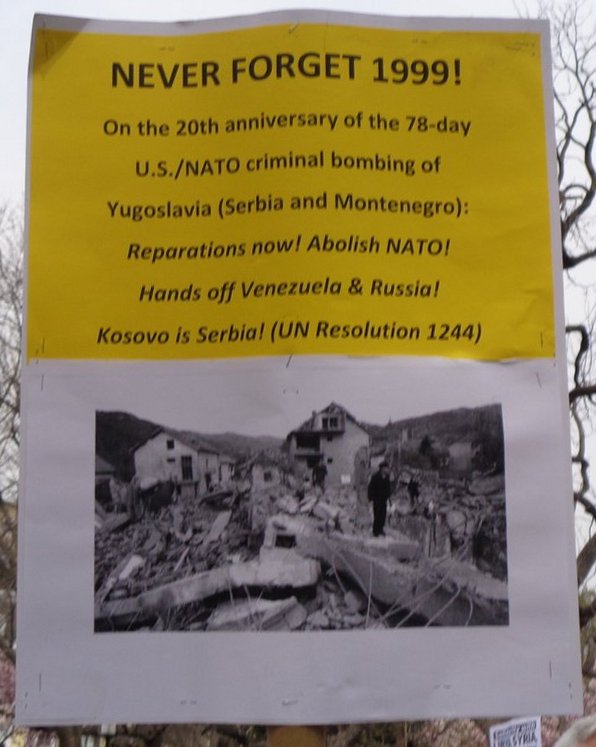
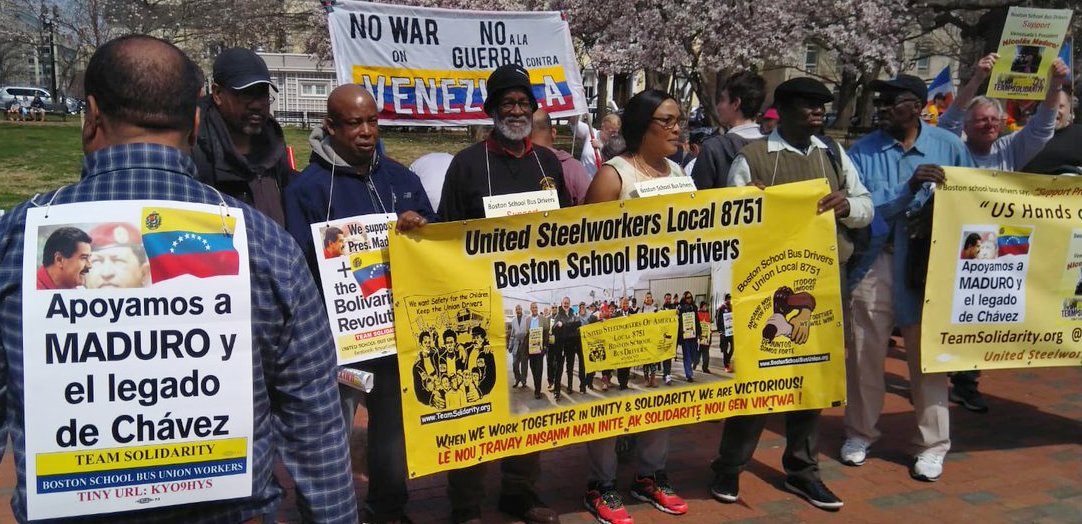

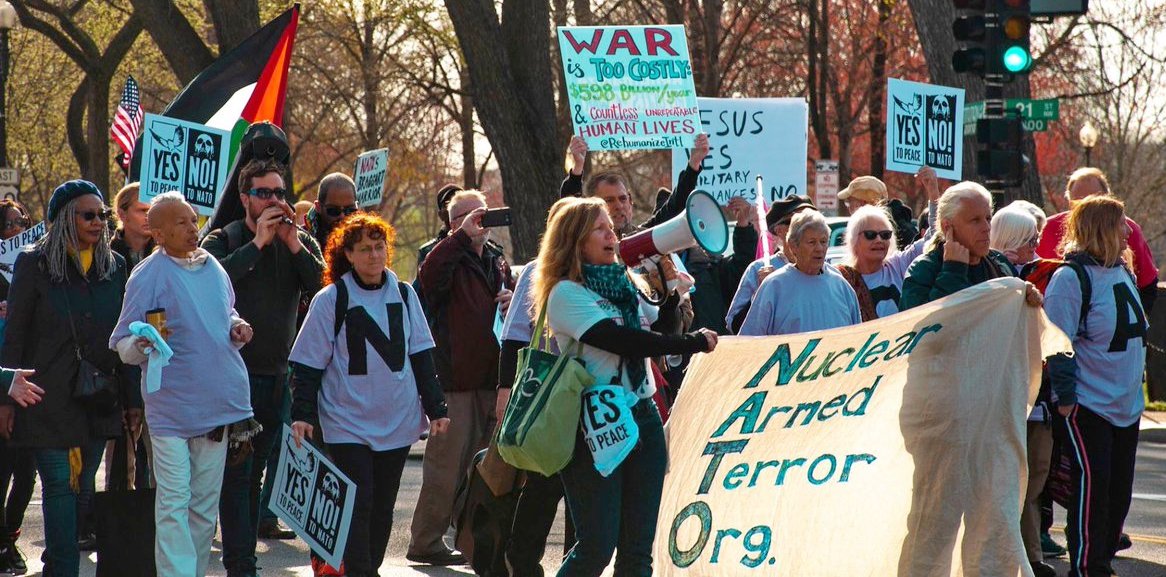

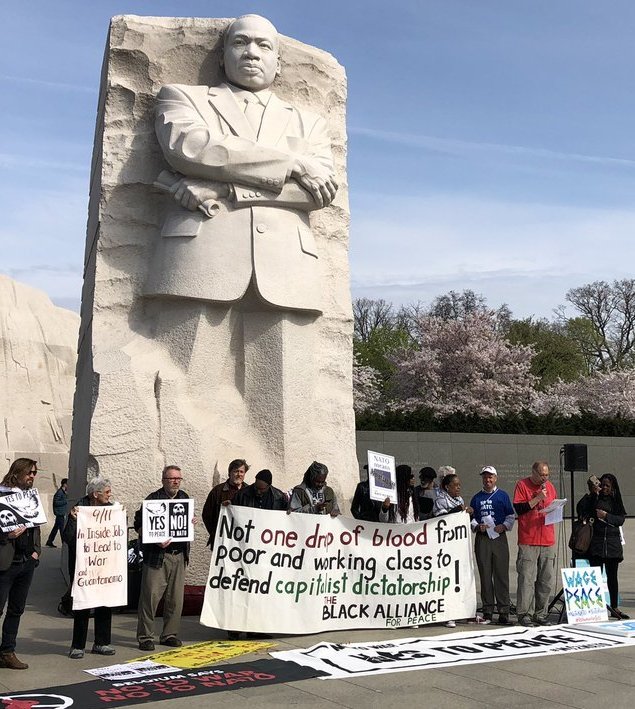


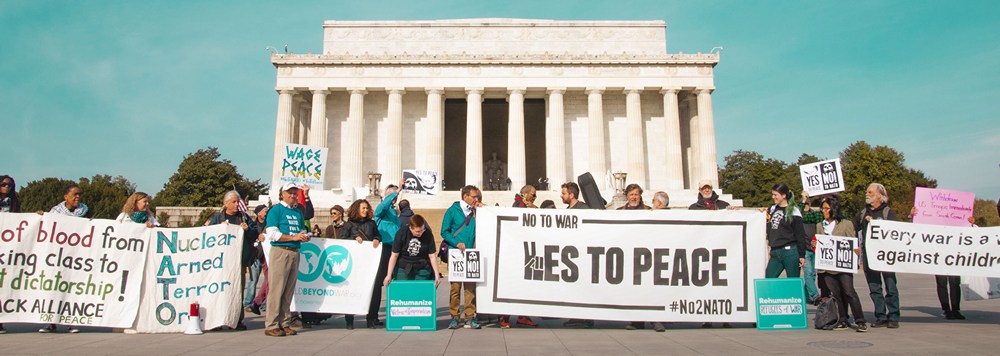
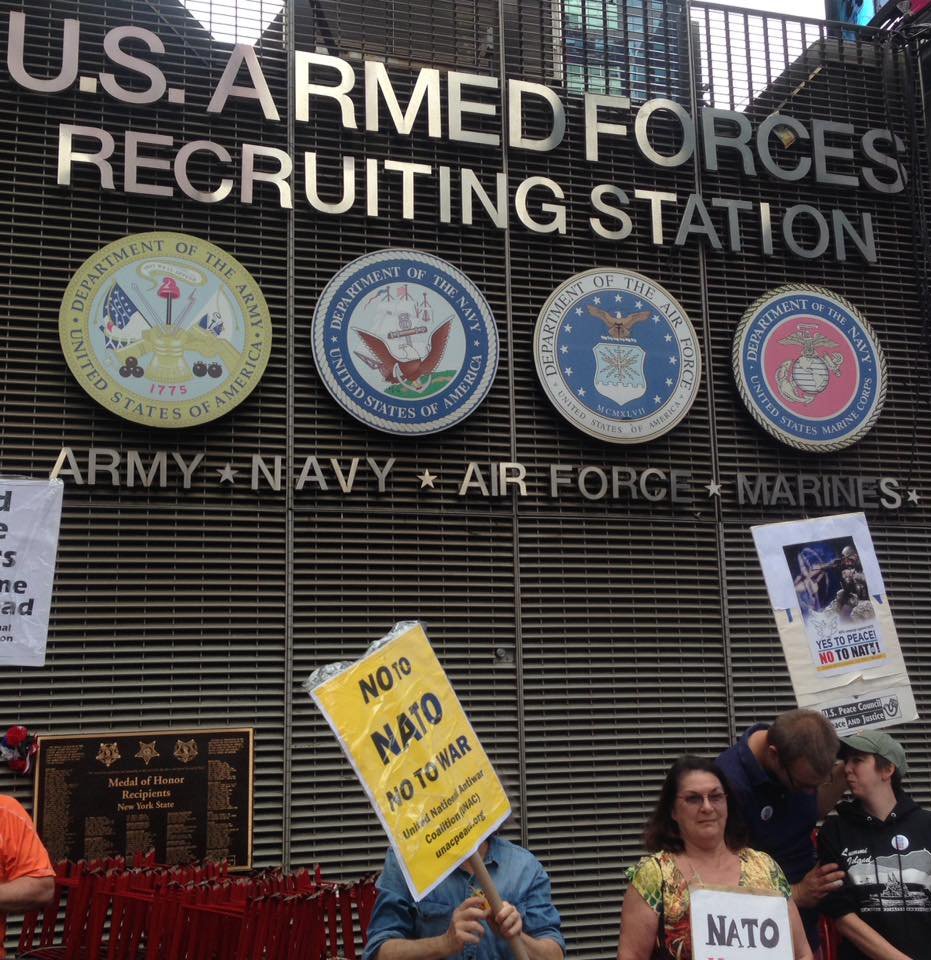
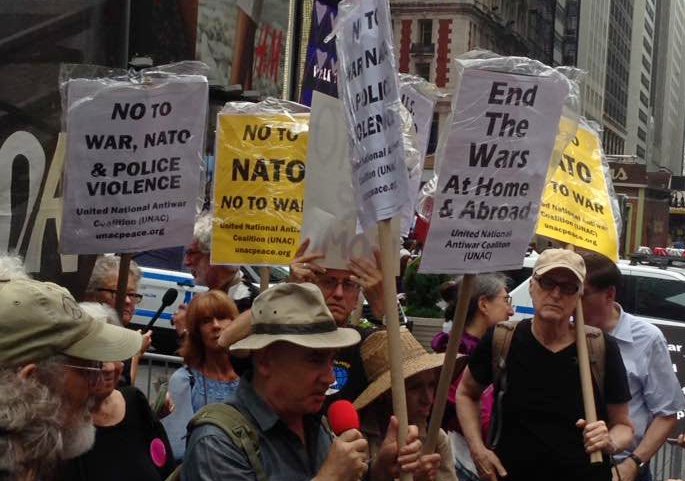

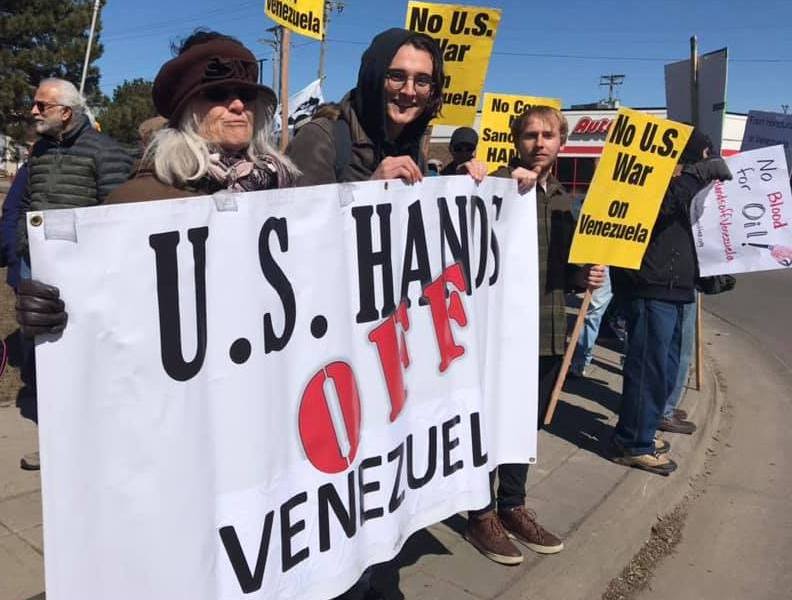
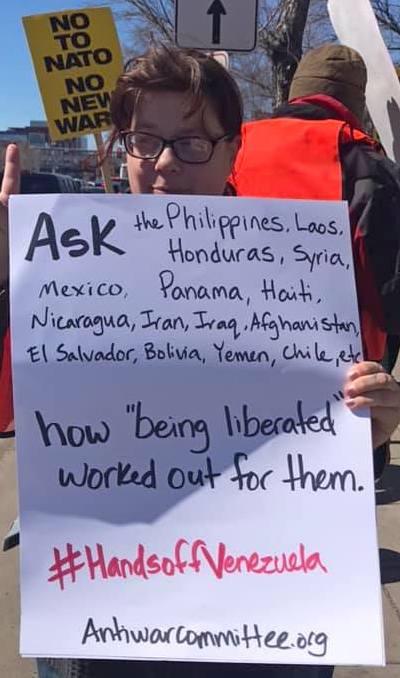


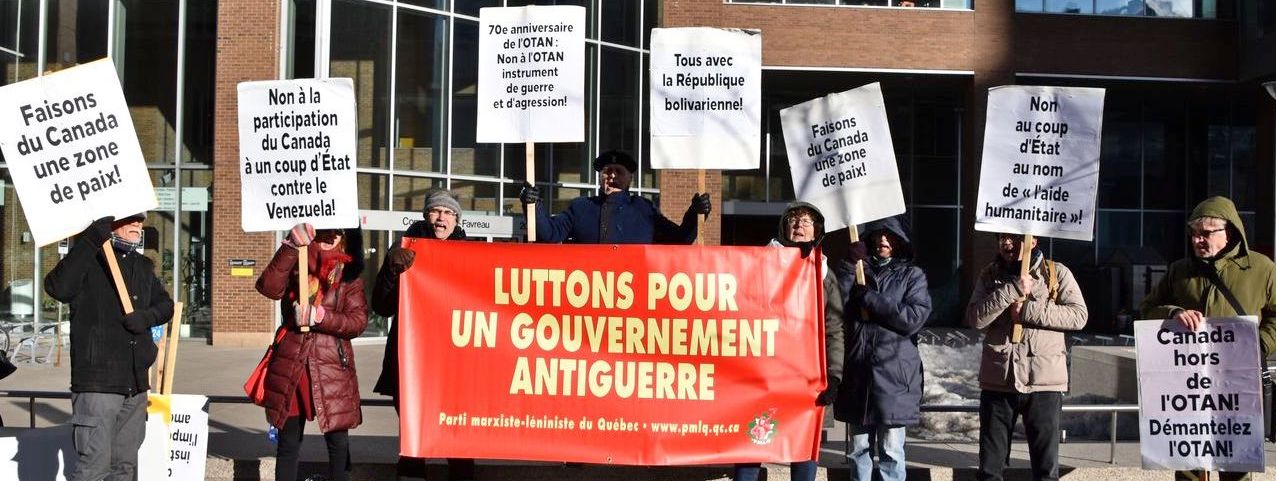


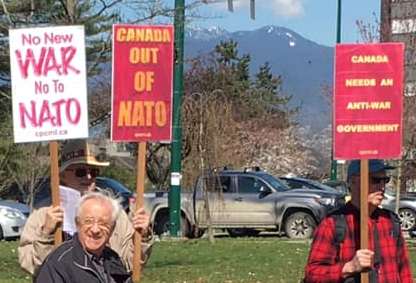
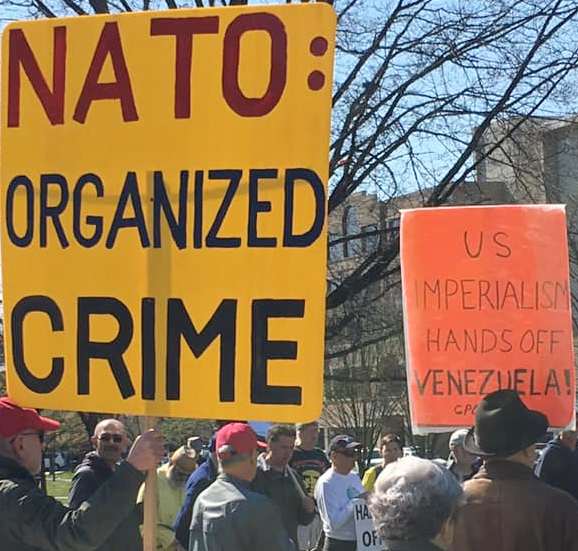

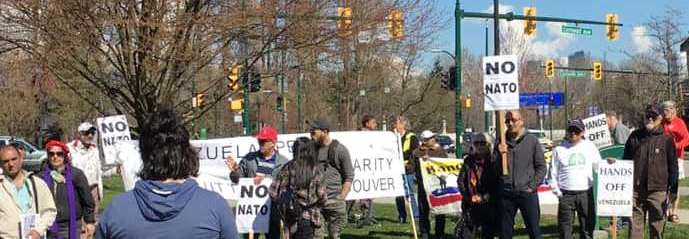
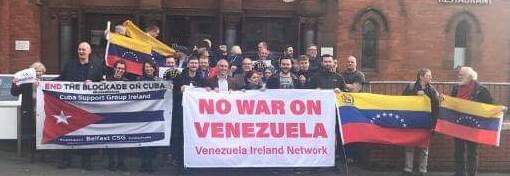
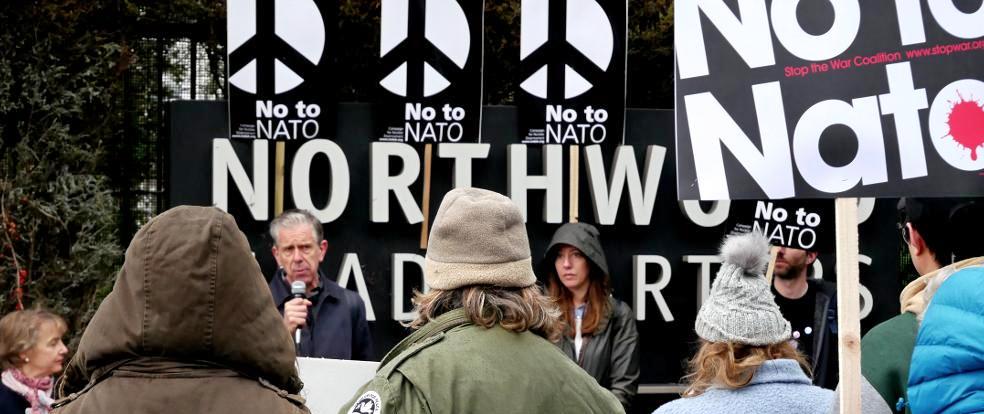
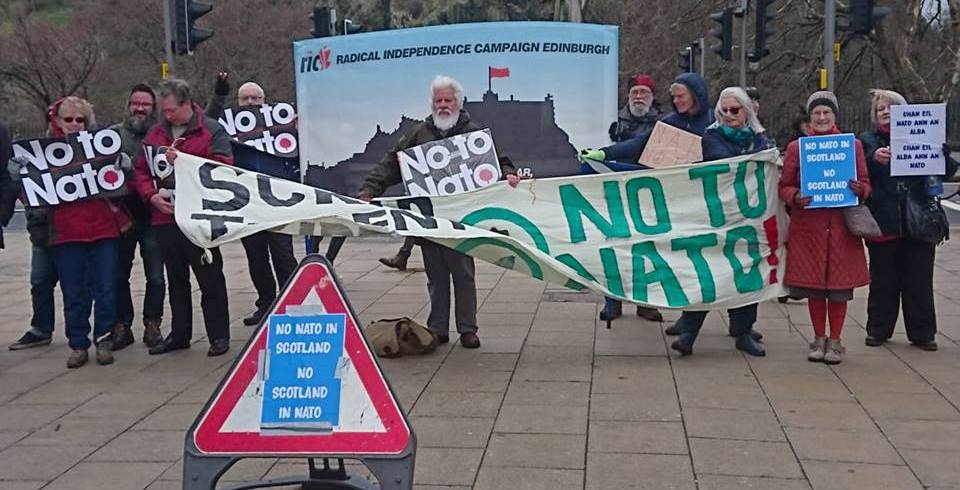
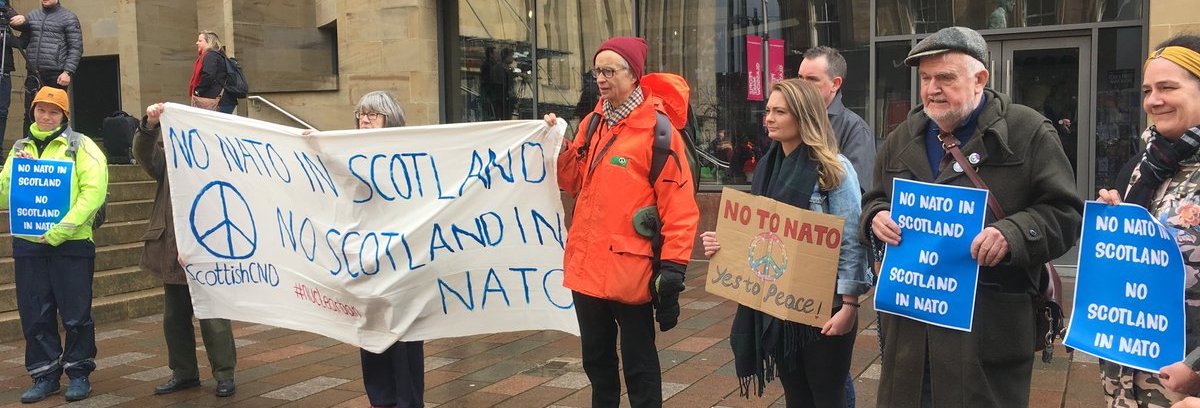



 Stavridis is also one of many
retired military, former intelligence, state and defence department
officials who have publicly condemned Trump's "national emergency" at
the border with Mexico, which opens the way for use of the military
inside the U.S. and against Mexico. These actions show that the
conflicts over NATO and how best to secure U.S. control abroad are tied
to the civil war inside the country, which threatens to become openly
violent.
Stavridis is also one of many
retired military, former intelligence, state and defence department
officials who have publicly condemned Trump's "national emergency" at
the border with Mexico, which opens the way for use of the military
inside the U.S. and against Mexico. These actions show that the
conflicts over NATO and how best to secure U.S. control abroad are tied
to the civil war inside the country, which threatens to become openly
violent.

